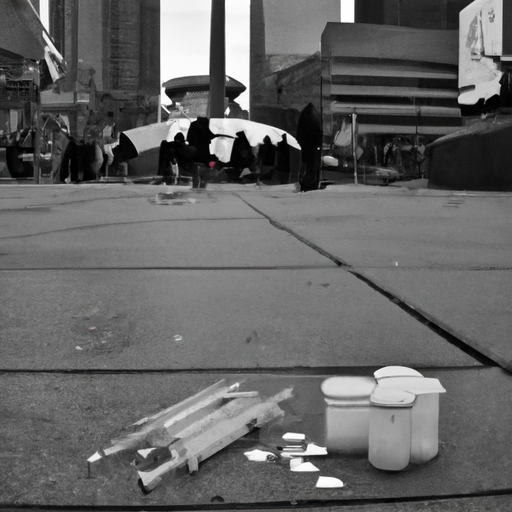The Opioid Crisis: A Closer Look at its Impacts in Toronto
In the heart of Canada’s most populous city, the negative effects of the opioid crisis are becoming increasingly evident, particularly among the vulnerable population. At Yonge-Dundas square, a central hub of the city of Toronto, the impact of this crisis is difficult to ignore. This post aims to shed light on the current state of affairs, the socio-economic implications, and the efforts being made to combat the opioid crisis.
Impacts of the Opioid Crisis on Homelessness and Crime
The opioid crisis has perpetuated a cycle of homelessness and increased crime rates within the city. It has been revealed that many people who are homeless have turned to opioids as a means of coping with their circumstances; this is a detrimental cycle that continues to perpetuate itself due to a lack of support and services on offer. Furthermore, the escalating opioid crisis has contributed towards a rise in crime, particularly theft, as individuals often resort to crime to fund their opioid dependency.
Key Points
- The rise in homelessness and crime in Toronto is closely linked to the escalating opioid crisis.
- Limited access to harm reduction services is a contributing factor towards the exacerbated state of affairs.
- The implementation of supportive measures such as naloxone accessibility and opioid class actions are key to moderating the effects of the crisis.
The Struggle for Harm Reduction Services
A pertinent concern is the profuse lack of harm reduction services. Accessibility to methadone clinics and needle exchange programs are not readily available. The dearth of these services in Toronto’s core, particularly in locations where they are needed the most, exacerbates the problems associated with the opioid crisis. Furthermore, bureaucratic barriers also exacerbate these consequences, hindering administrative progress in addressing the crisis.
Responding to the Crisis: Naloxone and Opioid Class Actions
In the face of this daunting crisis, several measures have been put in place to address the opioid problem. One such measure is the distribution of naloxone kits, which can save lives by reversing opioid overdoses.
Simultaneously, opioid class action lawsuits aim to hold pharmaceutical companies accountable for their role in the escalation of the crisis. Opioid class actions present a platform for concerned parties to demand accountability and compel policy changes that can contribute to addressing the opioid crisis.
Despite these measures, adequate funding and administrative will are mandatory for their effective implementation and to fundamentally alter the trajectory of the opioid crisis.
Crisis Fallout: Health & Social Consequences
The opioid crisis is not only a significant public health issue but also a profound social concern. It is crucial to understand that the fallout from the crisis extends beyond opioid users to affect families, communities, and the broader health-care system. High estimates for opioid-related deaths signify a substantial loss of life, which translates to immeasurable grief and an irreplaceable loss for families and communities.
Closing Summary: Building Constructive Pathways
In conclusion, the opioid crisis in Toronto represents a complex interplay between socio-economic factors, substance misuse, homelessness, and increased crime rates. While actions such as the distribution of naloxone kits and opioid class action lawsuits are steps in the right direction, much remains to be done in designing comprehensive and effective strategies to combat both the symptoms and root causes of this crisis. These could include:
- Enhancing existing harm reduction services and introducing more where they are most needed.
- Addressing social issues such as homelessness that contribute to the crisis.
- Ensuring better accountability from pharmaceutical companies through opioid class actions.
Addressing the opioid crisis effectively demands a multi-faceted approach involving stakeholders across various sectors. Only then can we hope to curtail this public health emergency and mitigate its devastating social repercussions.
Remember: Opioids do not discriminate; the crisis affects all sectors of society. As a community, it’s our responsibility to come together and fight this opioid scourge head-on.
